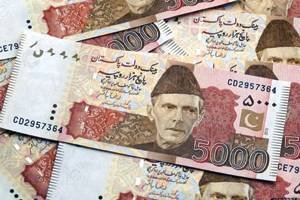The Dollar Falls to a Five-Month Low Against the Rupee
In recent weeks, the value of the US dollar has been steadily declining against the Indian rupee. This has led to the dollar reaching a five-month low against the rupee, causing concern among investors and economists.
Factors Contributing to the Dollar’s Decline
There are several factors that have contributed to the weakening of the dollar against the rupee. One of the main factors is the difference in interest rates between the United States and India. The US Federal Reserve has kept interest rates near zero for an extended period of time, while the Reserve Bank of India has raised interest rates in an effort to combat inflation. This has made the Indian rupee a more attractive investment option, leading to an increase in demand and a rise in its value.
Another factor that has impacted the dollar’s decline is the ongoing trade tensions between the United States and India. The imposition of tariffs and trade restrictions has had a negative impact on the US economy, which has in turn weakened the dollar. Additionally, the Indian economy has shown signs of resilience and recovery, which has boosted investor confidence and further strengthened the rupee.
Implications of the Dollar’s Decline
The fall of the dollar against the rupee has both positive and negative implications. On one hand, a weaker dollar can benefit Indian exporters as their goods become more competitive in the international market. This can lead to an increase in exports and contribute to economic growth. Additionally, a stronger rupee can help reduce the cost of imported goods, which can help lower inflation and improve the purchasing power of consumers.
However, there are also negative implications of the dollar’s decline. For one, it can make imports more expensive, which can lead to higher prices for consumers. This can potentially increase inflationary pressures and impact the overall cost of living. Additionally, a weaker dollar can make it more expensive for Indian companies to repay their dollar-denominated debts, which can put additional strain on their finances.
Outlook for the Dollar-Rupee Exchange Rate
It is difficult to predict the future movement of the dollar against the rupee with certainty. However, there are a few factors that could influence the exchange rate in the coming months. One of the main factors is the direction of monetary policy in the United States. If the Federal Reserve decides to raise interest rates or taper its asset purchase program, it could strengthen the dollar and reverse its decline against the rupee.
Another factor to consider is the ongoing impact of the COVID-19 pandemic. The trajectory of the virus and the effectiveness of vaccination efforts can have a significant impact on the global economy and currency markets. Any developments that affect investor sentiment or economic growth could influence the dollar-rupee exchange rate.
Conclusion
The recent decline of the US dollar against the Indian rupee has raised concerns among investors and economists. The difference in interest rates, trade tensions, and the resilience of the Indian economy have all contributed to the dollar’s fall. While there are both positive and negative implications of this decline, the future movement of the exchange rate remains uncertain. Factors such as monetary policy decisions and the ongoing impact of the COVID-19 pandemic will continue to shape the dollar-rupee exchange rate in the coming months.












